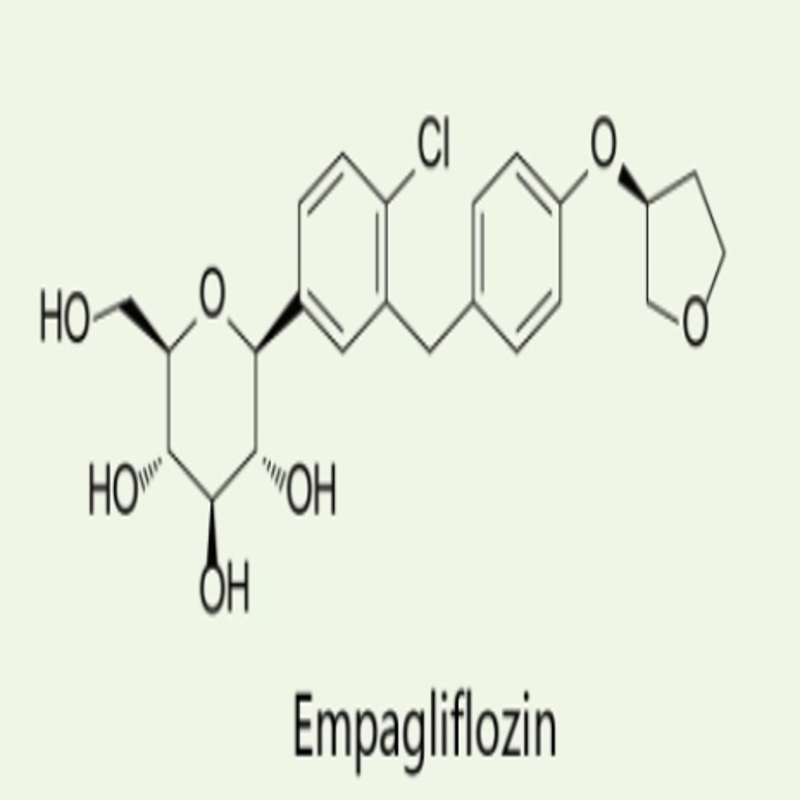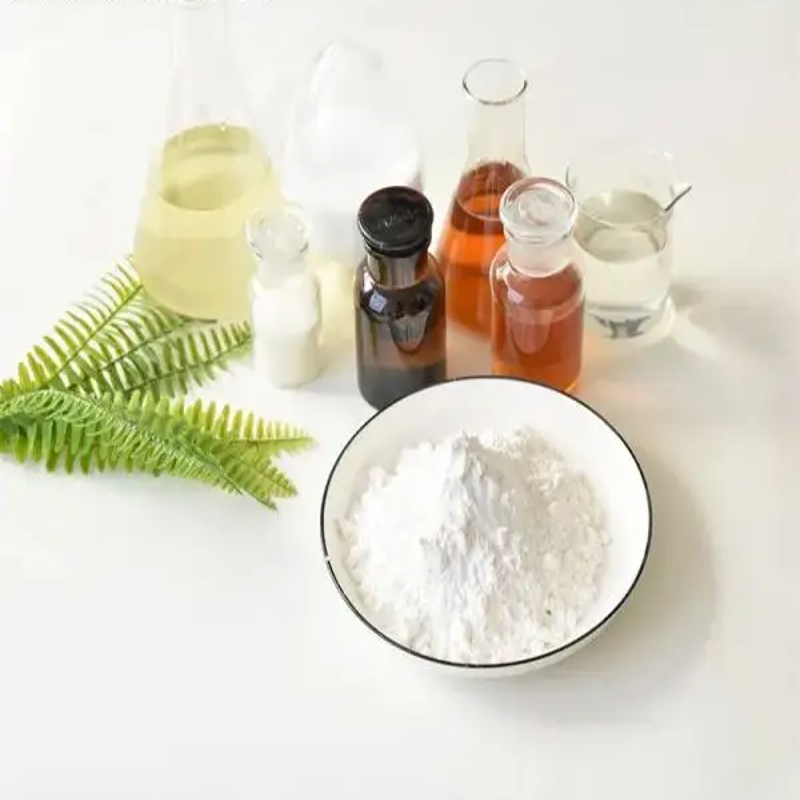-
Categories
-
Pharmaceutical Intermediates
-
Active Pharmaceutical Ingredients
-
Food Additives
- Industrial Coatings
- Agrochemicals
- Dyes and Pigments
- Surfactant
- Flavors and Fragrances
- Chemical Reagents
- Catalyst and Auxiliary
- Natural Products
- Inorganic Chemistry
-
Organic Chemistry
-
Biochemical Engineering
- Analytical Chemistry
- Cosmetic Ingredient
-
Pharmaceutical Intermediates
Promotion
ECHEMI Mall
Wholesale
Weekly Price
Exhibition
News
-
Trade Service
This article shares a case of a patient with type 2 diabetes mellitus (T2DM) with poor blood sugar control who started insulin pump therapy.
Professor Yang Zhixia from the Department of Endocrinology, Langfang People's Hospital was invited to comment on the case
.
The case of Professor Yang Zhixia from Langfang People's Hospital: The case mentioned in this issue is a middle-aged woman with type 2 diabetes mellitus with poor blood sugar control for 14 years and was admitted to hospital for treatment.
After U300 combined with OAD hypoglycemic program, blood glucose reached the standard smoothly
.
Case Narrator, Dr.
Wang Chengyu, Department of Endocrinology, Langfang People's Hospital, swipe up to read the patient information.
Female, 40 years old.
Chief complaint: 14-year history of elevated blood sugar.
The symptoms of three more and one less are obvious, and I went to our hospital to check for elevated blood sugar (the specific value can't be remembered), and the oral hypoglycemic agent was treated for more than 3 months (the specific drug and dosage can not be remembered).
After the patient became pregnant, the treatment was changed to insulin.
.
Insulin was discontinued postpartum and blood glucose was not monitored
.
More than 7 years ago, due to high blood sugar, oral administration of "glimepiride" 2 mg 1/day + "acarbose" 50 mg 3/day was treated for more than 1 year, during which fasting blood sugar was measured 10+mmol/L, postprandial blood sugar 13 +mmol/L without further treatment
.
More than 5 years ago, he was hospitalized in our department for subcutaneous insulin injection due to elevated blood sugar, and his condition improved and was discharged
.
After discharge, "Metformin Sustained-Release Tablets" 1.
0 g 2/day + "Acarbose" 100 mg in the morning, 50 mg in the afternoon, 50 mg in the evening with meals + 18 units of "Insulin glargine" subcutaneously injected before bed for more than half a year, No blood sugar monitoring, no symptoms of hypoglycemia, and then self-discontinued insulin, no blood sugar monitoring
.
One day before this admission, the random blood sugar of 18.
2 mmol/L was checked in our hospital, and he was admitted to hospital for treatment
.
Since the onset of the disease, the patient has been clear, in good spirits, and can sleep well.
He has not controlled his diet, and has never experienced hypoglycemia during the entire treatment process.
.
Lost about 10 kg in weight in the past 4 years
.
Blurred vision in both eyes 9 years ago, numbness in both hands intermittently 7 years ago, acupuncture-like pain in both feet intermittently 1 year ago, no edema of both lower extremities, no alternating diarrhea and constipation Personal History: Macrosomia Family History: His mother suffered from diabetes, hypertension, and denied family history of cardiovascular and cerebrovascular diseases.
Physical examination Slide up to read physical examination TPRBP36.
6 ℃102 times/min 19 times/min 128/90mmHgHWBMI_160 cm71.
8 kg28 kg/m2_ Physical examination: clear language, good spirit, entering the ward, automatic posture, stable breathing, cooperation in physical examination
.
Breath sounds were clear in both lungs, and no wet or dry rales were heard
.
The heart rate was 102 beats/min, the rhythm was uniform, and no pathological murmur was heard in the auscultation area of each valve
.
The abdomen was soft, without tenderness or rebound tenderness, and the liver and spleen were not palpable
.
There was no edema in the lower extremities, and the bilateral dorsal arteries were pulsed
.
Sensory threshold determination Multi-point abnormal laboratory test HbA1c: 11.
2% fasting insulin: 13.
33uIU/ml fasting C-peptide: 2.
30ng/ml Other laboratory tests and auxiliary tests: blood, urine, stool routine: no abnormality Total cholesterol: 4.
60 mmol/L, triglyceride: 1.
29mmol/L, low density lipoprotein: 2.
72mmol/L Liver and kidney function: no abnormality Electrolyte: no abnormality, five items of thyroid function are normal; TPO-Ab and TG-Ab are negative for auxiliary Check: ECG: Sinus rhythm HR: 89 beats/min normal ECG Lung CT: multiple chronic inflammatory changes in both lungs Type 2 Diabetes Type 2 Diabetic Peripheral Neuropathy Fatty Liver Obesity Case Characteristics Optimize the insulin hypoglycemic plan, control the blood sugar smoothly, and reduce the risk of hypoglycemia.
Swipe up to read the hypoglycemic treatment plan 1.
11—1.
19 Insulin pump therapy 1.
14 Combined with acarbose 1.
16 Combined with metformin sustained-release tablets 1.
17 Combined with lixisenatide 10ug qd1.
24 Discharge plan: Insulin glargine U300 Metformin sustained-release tablets 1.
0g bid, lixisenatide 10ug qd Life>
.
In terms of drug selection, safe and effective hypoglycemic drugs are preferred.
Insulin pump or 3+1 mode can be considered for hypoglycemia.
After intensive treatment, simplified regimen treatment or premixed insulin or basal insulin combined with oral drugs can be considered.
Oral medication
.
When choosing basal insulin therapy, insulin glargine U300 has a higher compliance rate, less risk of hypoglycemia and flexible dose adjustment than other basal insulins during the dose adjustment period
.
The plan is simple and the patient's compliance is better.
The initial hypoglycemic treatment is swiped up to read the treatment plan and the discharge follow-up
.
After discharge, they are expected to be managed by a standardized metabolic disease management center (MMC), treated with basal insulin (insulin glargine U300) for 3 months, followed up to re-evaluate islet function and adjust the hypoglycemic program
.
3 days later follow-up FPG: 5.
6mmol/l; PPG: 7mmol/l; hypoglycemic regimen: insulin glargine U300 qd 18U metformin sustained-release tablets 1.
0g bid lixisenatide 10ug qd; no hypoglycemia occurred
.
■Clinical Thinking 1.
The choice of insulin treatment plan should be patient-centered and fully consider various situations
.
On the premise of reducing the risk of hypoglycemia as much as possible, scientifically and rationally determine the feasible insulin varieties and drug regimens
.
2.
Basal insulin is the cornerstone of individualized treatment of diabetes, throughout the whole process
.
3.
Insulin glargine U300 is a more ideal choice for initial insulin therapy: insulin glargine U300 can provide stable 24-hour basal insulin coverage; insulin glargine U300 has a lower risk of hypoglycemia; insulin glargine U300 dose adjustment is more Flexible and convenient, it can be adjusted daily, every 3 days and every week
.
Expert Comments Professor Yang Zhixia from Langfang People's Hospital The case mentioned in this issue is type 2 diabetes mellitus with a long course of disease.
The blood sugar was severely increased at the time of diagnosis, the random blood sugar was 18.
2mmol/L, and the glycosylated hemoglobin was 11.
2%.
Considering the existence of high glucose toxicity, screening for complications Diabetic neuropathy was found, so an insulin pump was given immediately after admission to intensify blood sugar lowering and combined with metformin and acarbose as recommended by the guidelines to achieve the purpose of treatment and delaying the development of complications
.
When the blood sugar reached the standard, the treatment plan was changed to long-acting insulin combined with oral drugs and GLP-1RA before discharge, in order to protect the self-beta function while achieving the benefits of the heart and kidney, weight control and other comprehensive treatment purposes
.
Insulin glargine U300 is selected as the long-acting insulin.
Insulin glargine U300 is a new generation of ultra-long-acting basal insulin, which has been approved for marketing in China[1]
.
As a new generation of ultra-long-acting basal insulin, insulin glargine U300 adopts subcutaneous reservoir micro-precipitation technology to better simulate the physiological insulin secretion pattern to achieve more stable blood sugar control and reduce the risk of hypoglycemia [2], especially during dose adjustment.
The performance is more obvious [3-10]
.
Pharmacological studies and clinical studies have confirmed that insulin glargine U300 has the advantage of a more stable pharmacokinetic/pharmacodynamic curve than other long-acting insulins currently in clinical practice[11-12]
.
From the actual curative effect of this patient, the ideal therapeutic effect has also been achieved.
Whether the blood sugar control is the multi-point blood sugar adjusted by the in-hospital plan or the out-of-hospital follow-up patient, the multi-point blood sugar has been optimized and reached the standard, which is very beneficial in preventing complications.
Yes, metabolic benefits can be achieved
.
Patient satisfaction with the treatment regimen was high
.
The overall treatment plan reflects the purpose of treatment and prevention for patients with type 2 diabetes mellitus complicated by macrovascular complications, and achieves the purpose of comprehensive management of diabetic patients
.
Routine clinical application of basal insulin combined with oral drugs is currently one of the most widely used and effective strategies, and this program is also widely used in outpatient clinics.
.
This patient's insulin glargine U300 combined with OAD hypoglycemic program is summarized as follows: 1.
Effective hypoglycemic: insulin glargine U300 can provide stable 24-hour basal insulin coverage to reduce fasting blood sugar [11-12], improve postprandial blood sugar drift, It can control the blood sugar level of patients more comprehensively, further reduce the HbA1c level, and improve the blood sugar compliance rate [13]
.
2.
High safety: to achieve stable hypoglycemia and lower risk of symptomatic hypoglycemia, both efficacy and safety can be considered [13]
.
3.
Good compliance: The dosage adjustment of insulin glargine U300 is more flexible and convenient, and can be adjusted flexibly every day, every 3 days and every week [14]
.
In addition, the insulin glargine U300 injection pen has accurate dose and low injection pressure, so patients have good experience, good compliance and high satisfaction[15-16]
.
4.
Cost savings: The DELIVER 2 study confirmed that in the real world, switching to insulin glargine U300 program saves the use of hypoglycemia-related medical resources compared with switching to other basal insulins [17]
.
References: [1] Instructions for insulin glargine U300 [2] Hedrington MS et al.
Diabetes Technol Ther.
2011; 13 Suppl 1:S33-42; 2.
Becker RH et al.
Diabetes Care.
2015;38:637-43 ; 3.
Jax T et al.
Poster presented at EASD 2013; Abstract 1029.
Available at http:// May 2014; 4.
Steinstraesser A et al.
Diabetes Obes Metab.
2014;16: 873-6[3]Riddle MC, et al.
Diabetes Care 2014,37(10):2755-62[4]Yki-Jarvinen H, et al.
Diabetes Care 2014,37(2):3235-43[5] Bolli GB, et al.
Diabetes Obes Metab 2015,17(4):386-94[6]M Davies et al.
J Diabetes Sci Technol.
2019,13(5):881-9[7]Gerstein HC, et al .
Diabet Med 2006,23(7):736-42[8]Philis-Tsimikas A, et al.
Adv Ther 2013,30(6):607-22[9]D Russell-Jone et al.
Diabetes Obes Metab 2019 , 21:1615–24 [10] Rosenstock J, et al.
Diabetes Care 2018, 41(10):2147-54 [11] Becker RH, et al.
Diabetes Care 2015, 38(4):637-643[12]Bailey T, et al.
Diabetes Metab 2018,44(1):15-21[13]Pfohl M, et al.
Diabetes Obes Metab 2020,22(5):759-766[14]Riddle MC, et al.
Diabetes Technol Ther 2016, 18(4):252-257[15]Klonoff D, et al.
J Diabetes Sci Technol 2015,10(1):125-130[16]Pohlmeier H, et al.
J Diabetes Sci Technol 2017,11(2):263-269[17]Zhou FL, et al.
Diabetes Obes Metab 2018,20(5):1293-1297MAT-CN-2201326







